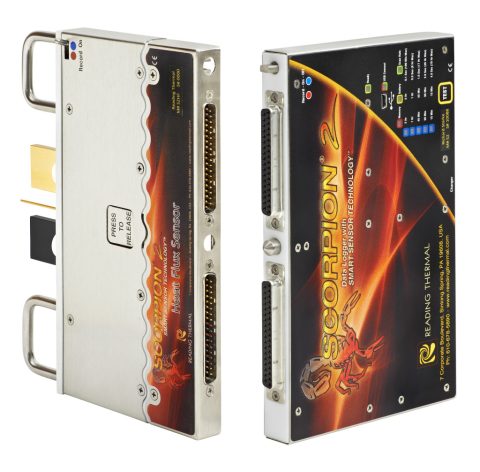Rising energy costs and growing environmental concerns have pushed bakeries to seek ways to reduce their energy consumption without compromising product quality. One effective tool in achieving this balance is the SCORPION® 2 LITE commercial temperature logger for bakeries from Reading Thermal. Here’s how our temperature logger can play a key role in reducing energy consumption in bakeries.
Understanding the Role of Temperature Loggers
Temperature loggers are devices that record temperature data over time. They are typically placed inside ovens or other critical points in the baking process to monitor and log temperature fluctuations. This data can then be analyzed to understand how the baking environment is performing and to identify areas where improvements can be made.
In the context of energy efficiency, temperature loggers provide essential insights into how energy is being used during the baking process. By monitoring temperatures continuously, these devices can reveal patterns and trends that might not be apparent through periodic checks alone. This real-time data allows bakeries to make informed decisions about how to adjust their processes to use energy more efficiently.
Optimizing Oven Temperature for Energy Efficiency
One of the primary ways temperature loggers help reduce energy consumption is by enabling more precise control over oven temperatures. Ovens that are consistently too hot or too cold can waste energy – either by using more heat than necessary or by requiring longer bake times to compensate for lower temperatures.
Temperature loggers provide detailed data that can help bakers fine-tune oven settings to maintain the optimal temperature range for each product. For example, if a temperature logger reveals that an oven is consistently overshooting the target temperature, adjustments can be made to lower the set point, reducing the amount of energy required to maintain the desired heat level.
In addition to optimizing the set temperature, temperature loggers can also help in determining the ideal preheat time. By understanding how quickly an oven reaches the desired temperature, bakeries can reduce unnecessary preheating, saving both time and energy.
Reducing Bake Times with Accurate Temperature Data
Another way temperature loggers contribute to energy savings is by helping to reduce bake times. Accurate temperature data allows bakers to determine exactly when a product has reached the desired internal temperature, potentially shortening the overall bake time.
For instance, if a product consistently reaches the appropriate temperature several minutes before the scheduled end of the baking cycle, this information can be used to adjust the baking time accordingly. Even a small reduction in bake time across multiple batches can add up to significant energy savings over the course of a day, week or year.
Preventing Over-Baking and Energy Waste
Over-baking not only wastes energy but can also lead to product waste, as overcooked items may not meet quality standards. Temperature loggers help prevent over-baking by providing real-time alerts when the product has reached the desired temperature, allowing bakers to remove items from the oven at the optimal time.
Identifying Inefficiencies in Oven Performance
Finally, Reading Thermal temperature loggers can also be instrumental in identifying inefficiencies within the oven itself. For example, if an oven is taking longer than expected to reach the desired temperature, or if it struggles to maintain a consistent temperature, this could indicate a problem with the oven’s heating elements, insulation, or other components.
For more information about the SCORPION® 2 LITE commercial temperature logger for bakeries, contact Reading Thermal online or call 610-678-5890.

